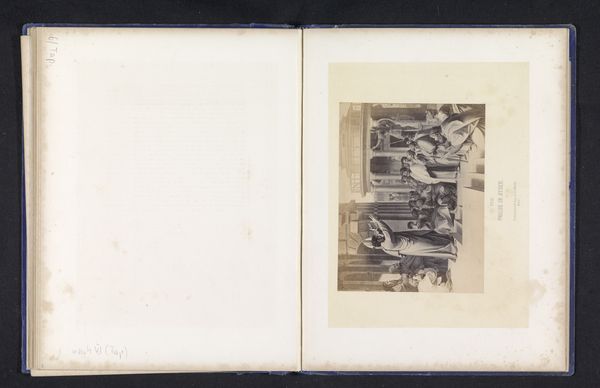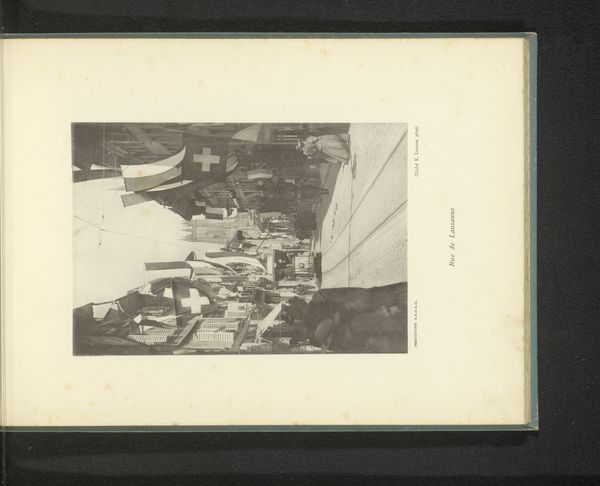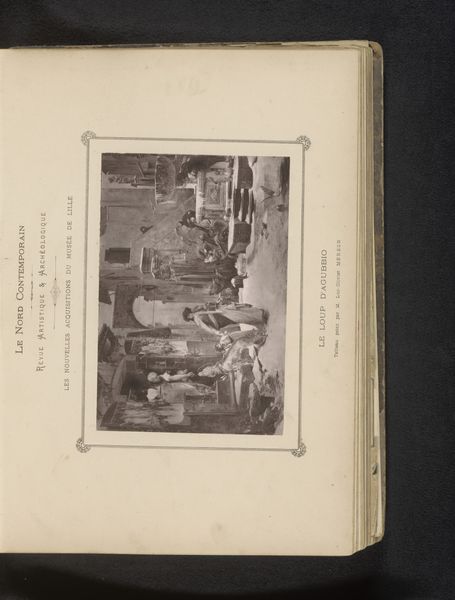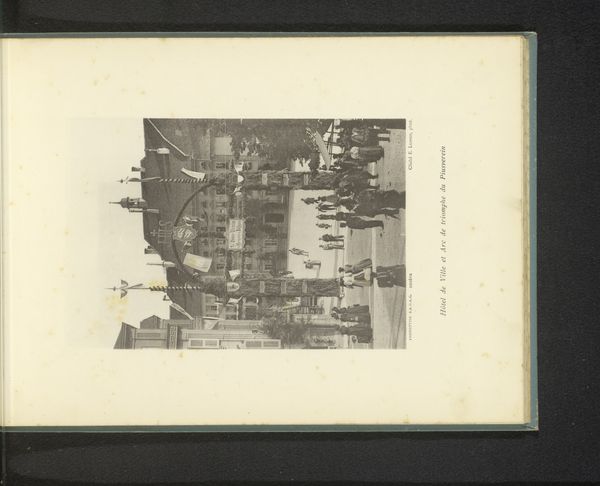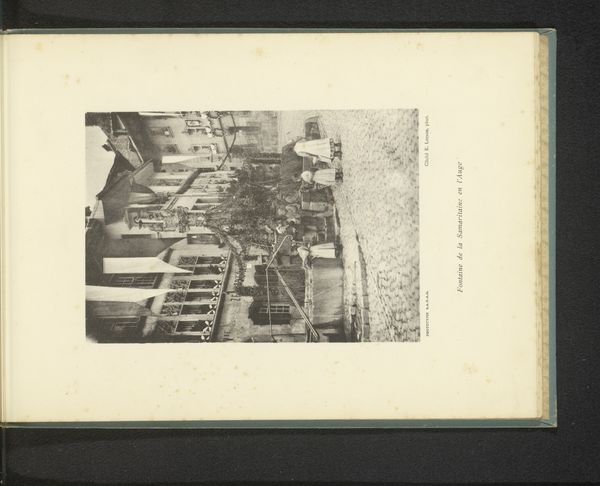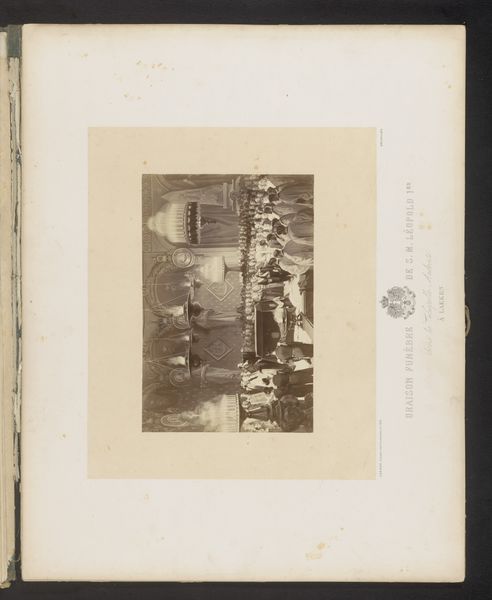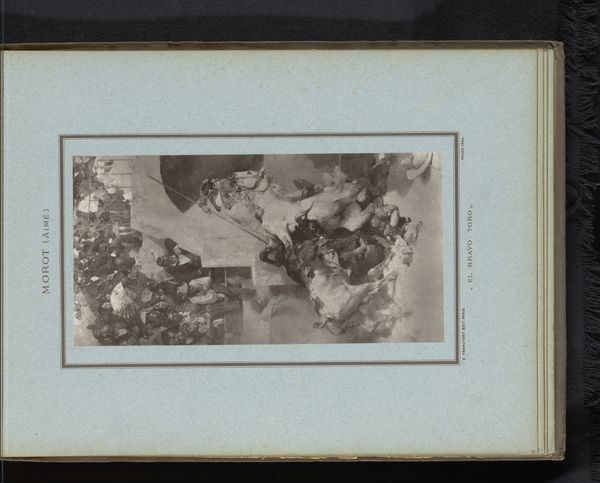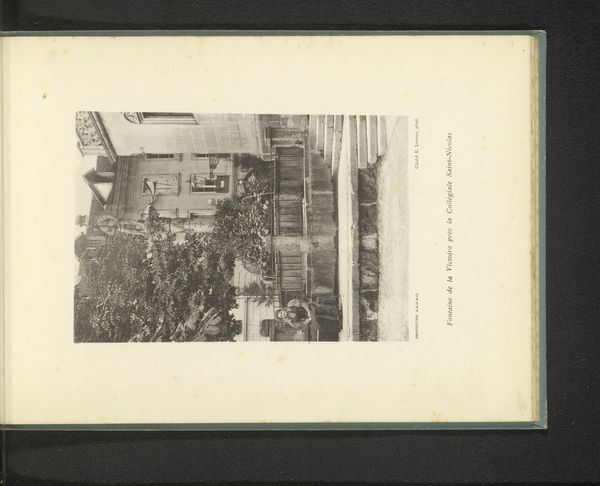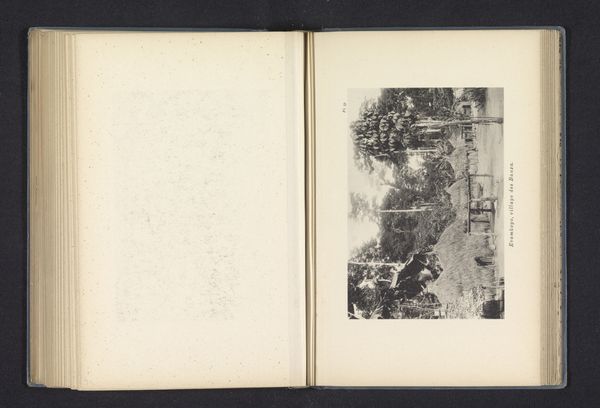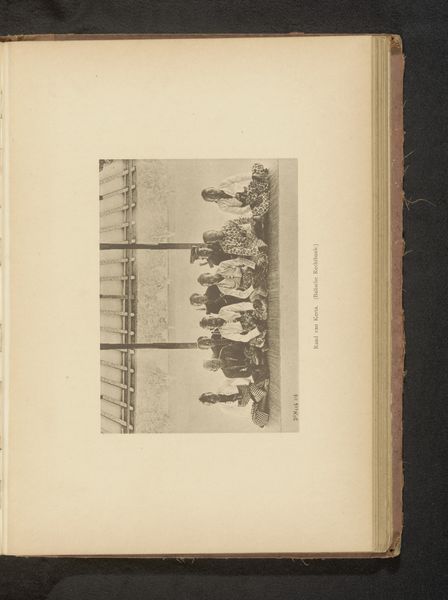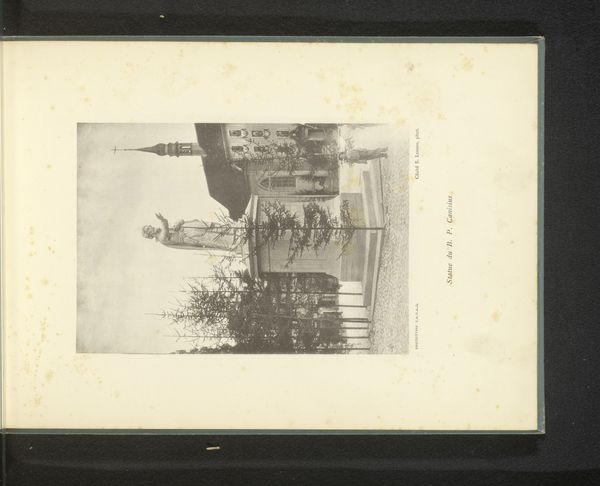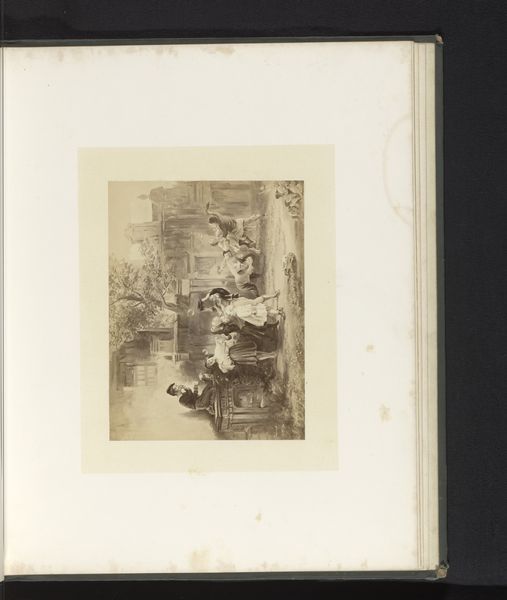
print, photography
#
pictorialism
# print
#
landscape
#
photography
#
modernism
Dimensions: height 162 mm, width 113 mm
Copyright: Rijks Museum: Open Domain
Curator: This print from 1897 is called "Gezicht op La fontaine de Saint-Jean in Fribourg", or "View of the Fountain of Saint-Jean in Fribourg." It was created by Ernest Lorson, using photography as the medium. Editor: It possesses an interesting quietude. A somber quality emanates from the monochrome print, and that, coupled with the almost blurred effect, renders an intensely historical atmosphere. Curator: Indeed. Pictorialism, as a style, favored soft focus and atmospheric effects, striving for an aesthetic kinship with painting and etching. In terms of iconography, water, especially from a fountain, often symbolizes purification, life, or even the subconscious mind, especially given that Fribourg’s fountain speaks of renewal through Saint John the Baptist, thus holding very rich cultural significance. Editor: And its placement becomes a site of gathering, perhaps speaking to class divides as it's public and free, serving multiple social stratifications. Did Lorson intend to comment on social classes co-existing or was the photograph to evoke feelings of nostalgia about a disappearing old European tradition, when modernism gained terrain in Europe? Curator: Lorson’s stylistic choices definitely speak to a modernist interest that can embrace pictorial elements in this instance. The photograph gives me the sensation that Loroson wanted to communicate something symbolic using his contemporary means; not to reproduce a perfect landscape, but an ethereal view that embodies, or speaks about time, tradition, religion, and modernity itself. Editor: Time... it's fascinating how such still images become active agents within historical discourse. Consider the environmental elements in relation to how water becomes increasingly precious. These are resources we can look at anew using a modern, twenty-first century lens. Curator: Exactly! By observing how past societies structured their lives and valued resources like the communal water source depicted, it can offer tangible points of entry into debates about distribution and sustainability today. It connects past cultural value systems with current environmental and ethical exigencies. Editor: I agree completely! There's always so much more that we can unravel about an artwork. Curator: This makes you consider that a true study is a palimpsest in which ideas and meanings always resurface through an inexhaustible dialogue!
Comments
No comments
Be the first to comment and join the conversation on the ultimate creative platform.
